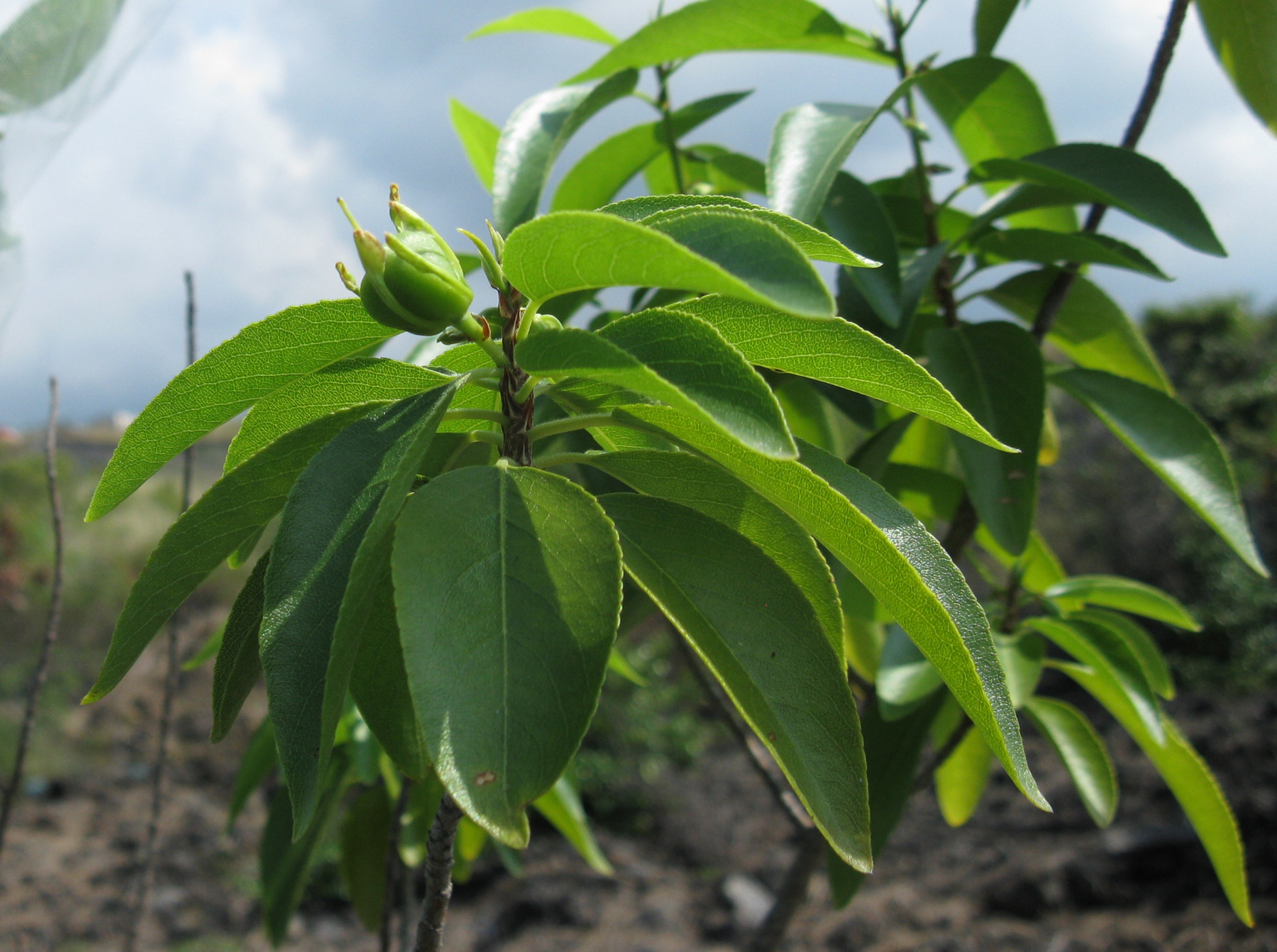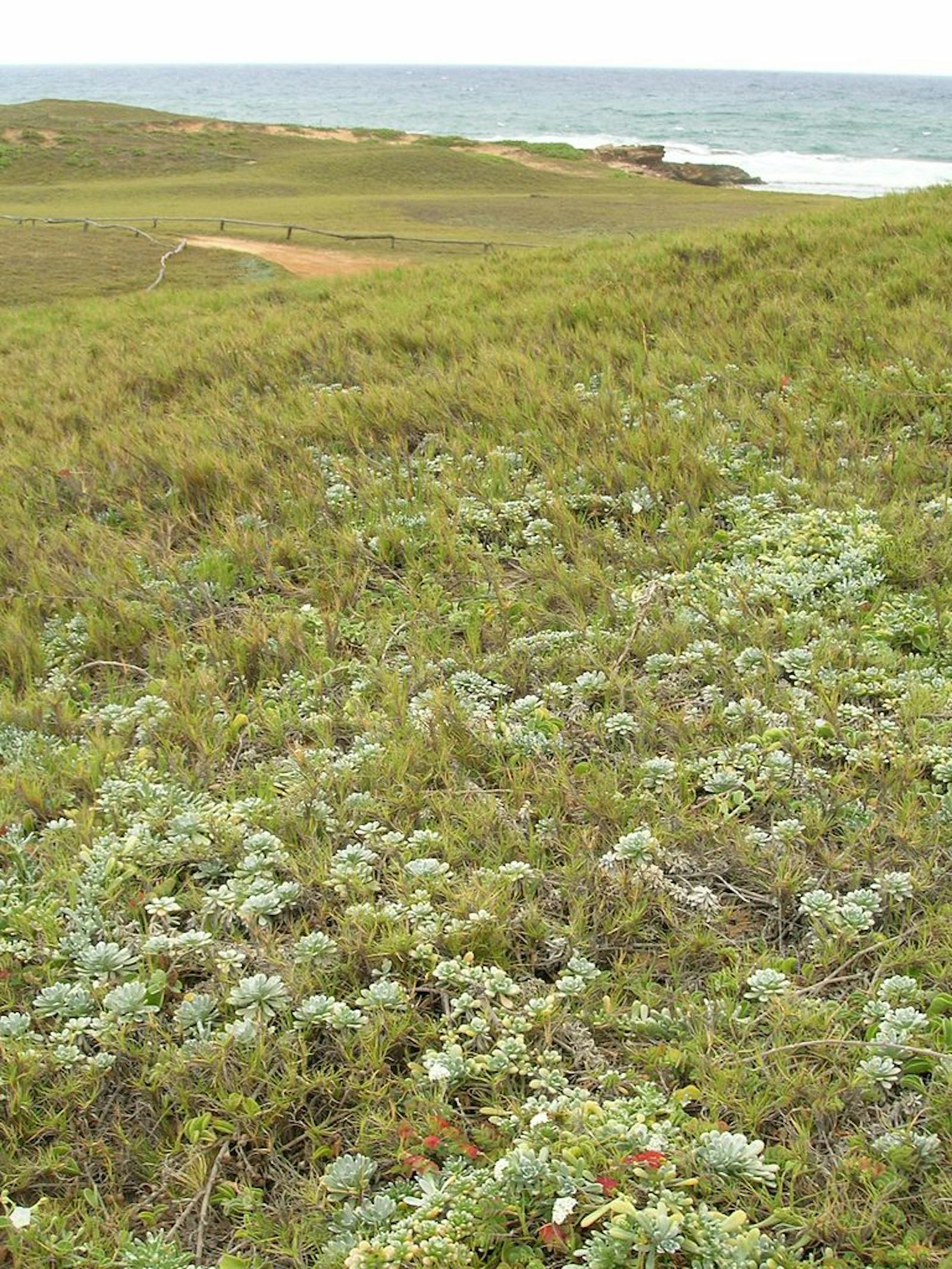Hawai'I Tropical Low Shrublands
The ecoregion’s land area is provided in units of 1,000 hectares. The conservation target is the Global Safety Net (GSN1) area for the given ecoregion. The protection level indicates the percentage of the GSN goal that is currently protected on a scale of 0-10. N/A means data is not available at this time.
Bioregion: Hawai’i Tropical Islands (OC11)
Realm: Oceania
Ecoregion Size (1000 ha):
153
Ecoregion ID:
640
Conservation Target:
27%
Protection Level:
4
States: United States
Hawai’i’s lowland dry shrublands are carpeted with small bright flowers in the rainy winter months, busily being visited by native yellow-faced bees. Some like the Ma'o hau hele hibiscus and the ‘ohai (Sesbania tomentosa) produce spectacular yellow and salmon flowers, respectively.

The flagship species of the Hawai'I Tropical Low Shrublands ecoregion is the ‘ohai (Sesbania tomentosa). Image credit: Creative Commons
Low shrublands occur on the lowest leeward slopes of the higher Hawaiian Islands, and on all but the summit regions of the islands of Lana’i, Kaho’olawe and Ni’ihau. The ecoregion contains the driest of all lowland habitats in the archipelago. Rainfall is low (500–1500 mm), mostly in the winter months. Coastal strand vegetation hosts several species that are found widely throughout the Pacific as they are adapted to far-flung dispersal.
Shrublands that occur further inland and higher on basalt outcrops have taller vegetation and a more unique flora. Up to 90% of the more than 200 species of shrubs, grasses, ferns, and herbaceous plants are unique to ecoregion or archipelago. Some characteristic plants are Abutilon spp., Achyranthes spp., Chamaesyce spp., ‘ohai (Sesbania tomentosa), Dodonaea viscosa, Sida falax, Myoporum sandwicense, Solanurn nelsonii, Scaevola sericea, Ipomoeapes caprae, Capparis sandwichiana, Gossypium spp., Hibiscus brackenridgei, Plectranthus parviflorus, and viny popolo (Solanurn nelsonii). The 'iliahi (Santalum ellbtirum) is a beach-adapted sandalwood.

Isodendrion pyrifolium. Image credit: C.Harrington, Creative Commons
This ecoregion has been heavily cleared and degraded, with less than 2% of natural habitat remaining and much of that under threat from fires, clearing for development (Waikiki Beach was originally lowland shrubland), fires, off-road vehicles, and invasive plants and animals, especially rats that prey on seeds and the grazing and trampling of feral goats and deer.
Coastal shrublands are particularly vulnerable to trampling and crushing from off-road vehicles. Invasive plants outcompete native plants. Some of the most impactful are Leucaena leucocephala, Guinea grass, sour grass, and mesquite. Thousands of Laysan albatross and other seabirds once commonly nested in coastal shrublands, but introduced predators and changes in shrubland structure from invasive plants made nesting untenable.

Sesbania tomentosa. Image credit: Forest and Kim Starr, Creative Commons
A recent effort to ban off-road vehicle use and put up a predator-free fence at Kaena Point State Park on O’ahu, combined with invasive plant control, has resulted in strong regeneration of the shrublands and the return of nesting Laysan albatross. Kaena point is one of the last, best examples of native lowland shrubland. Some small, often degraded, examples also occur on Kaho’olawe Island and Mo’omomi Preserve on Moloka’i.
Priority conservation actions for the next decade are: 1) continue the restoration management of Kaena Point and expand the fencing and vehicle ban approach to other priority sites; 2) support efforts for propagation of threatened plant species with restoration of wild populations in defensible habitat fragments; and 3) protect representative shrubland habitats on each of the larger islands to ensure single or near island-endemics are conserved.
Citations
- Cuddihy LW. 1989. Vegetation zones of the Hawaiian Islands. In: Stone CP, Stone DB (eds) Conservation Biology in Hawaii. Cooperative National Park Resources Studies Unit, University of Hawaii, Honolulu.
- Mueller-Dombois D, FR Fosberg. 1998. Vegetation of the Tropical Pacific Islands. Springer-Verlag, New York.
- Gon S. 2018. Hawaiian tropical low shrublands. Accessed 1 June 2018 at https://www.worldwildlife.org/ecoregions/oc0702



